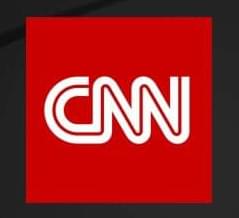It’s a step toward The Terminator, built 20 times faster than people can program



Turkish firm Solid Aero unveiled the Talay unmanned aerial vehicle, which was introduced as the world’s first low-altitude multipurpose UAV last year, on the global stage with a production-ready model at the International Defense Industry Fair (IDEF 2025) in Istanbul.
The Talay UAV was introduced at the SAHA Expo last year. The craft will enter mass production once its maritime test missions are completed.
The aircraft proved itself with its free flight capacity at a 100-meter altitude using the “Wing-in-Ground” principle.
Solid Aero will soon begin the testing and production of the craft in collaboration with Istanbul-based Yonca Shipyard.
The Talay UAV was developed to be used for low-altitude operations over sea as an effective and high-performance platform for defense, attack, and deterrence missions.#
Gliding just above sea surface to avoid detection, Solid Aero’s Talay UAV to be used for defense, attack, deterrence, coastal missions — Anadolu Ajansı

Imagine a drone that glides through the air without the familiar buzz of propellers or the hum of motors, a machine so quiet and still that it seems to defy the very principles of flight. This is no longer a vision confined to science fiction. A French startup, Photonaire, based in the vibrant city of Lyon, has brought this concept to life with a drone that flies using nothing but light.
By tapping into the power of concentrated laser beams, this groundbreaking invention generates thrust through a phenomenon known as “optical lift,” offering a glimpse into a future where aerial and space technology could be transformed. Photonaire’s creation weighs a mere 90 grams, a featherweight by any standard, yet it carries the weight of innovation on its delicate frame.
Unlike traditional drones that rely on mechanical components to lift off and manoeuvre, this device uses high-powered lasers reflected off ultra-thin metamaterials—materials engineered with precision to harness light in ways that conventional substances cannot. Drawing inspiration from solar sail technology, which uses sunlight to propel spacecraft, and the subtle forces of quantum pressure, the drone hovers and adjusts its path by altering the angle of these reflective surfaces in real time.

Researchers studying the remains of a prehistoric woman who lived around 10,500 years ago in what is now Belgium have produced a reconstruction of her face using ancient DNA.
A team led by scientists from Ghent University found that the woman would have had blue eyes and slightly lighter skin than most other people from the Mesolithic period in Western Europe who have been analyzed to date, according to a statement from the university on Tuesday.
Isabelle De Groote, an archaeologist at Ghent University who leads the research project on Mesolithic Belgium, told CNN that the woman came from the same population group as the Cheddar Man, who lived in what is now the United Kingdom at around the same time, but had lighter skin.

Researchers have suspected for some time that the link between our gut and brain plays a role in the onset of Parkinson’s disease.
A recent study identified gut microbes likely to be involved and linked them with decreased riboflavin (vitamin B2) and biotin (vitamin B7), suggesting an unexpectedly simple treatment that may help: B vitamins.
“Supplementation therapy targeting riboflavin and biotin holds promise as a potential therapeutic avenue for alleviating PD symptoms and slowing disease progression,” Nagoya University medical researcher Hiroshi Nishiwaki said when the study was published in May 2024.
On August 7, 2025, NASA shared a new image of Comet 3I/ATLAS and an updated estimate of its size. 3I/ATLAS, the 3rd-known interstellar object, was originally estimated to have a diameter of 20 km (12 miles). But with data from the Vera C. Rubin Observatory, astronomers re-estimated the size to be around 10 km (6 miles). And now the Hubble data puts the size of 3I/ATLAS’s nucleus at a diameter of 5.6 km (3.5 miles). But it could be as small as 320 meters (1,050 feet) across.

OpenAI released a keenly awaited new generation of its hallmark ChatGPT on Thursday, touting “significant” advancements in artificial intelligence capabilities as a global race over the technology accelerates.
ChatGPT-5 is rolling out free to all users of the AI tool, which is used by nearly 700 million people weekly, OpenAI said in a briefing with journalists.
Co-founder and chief executive Sam Altman touted this latest iteration as “clearly a model that is generally intelligent.”

